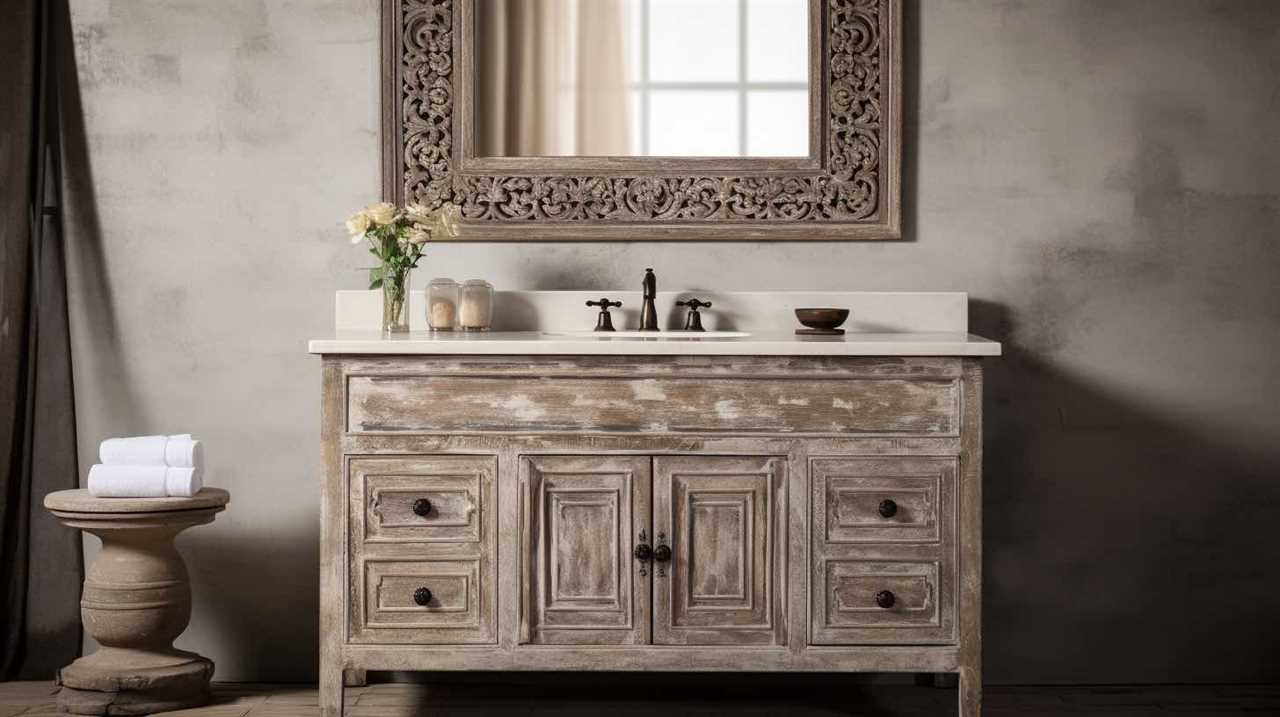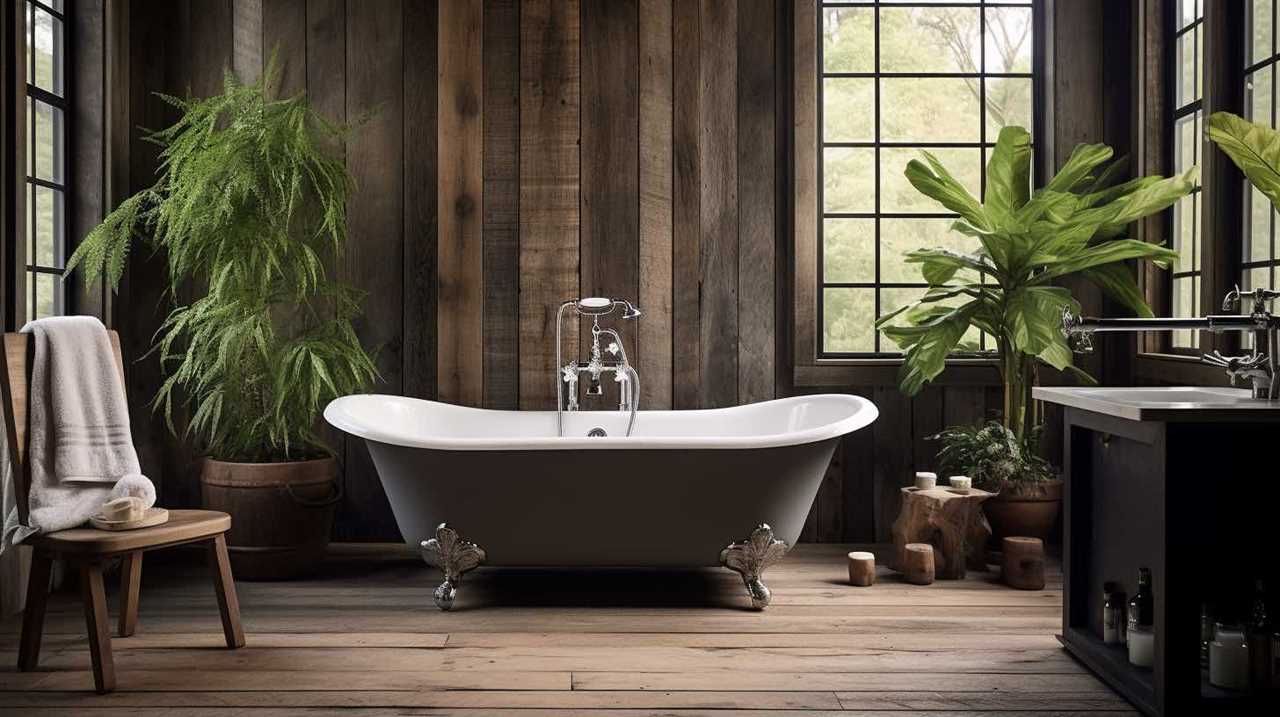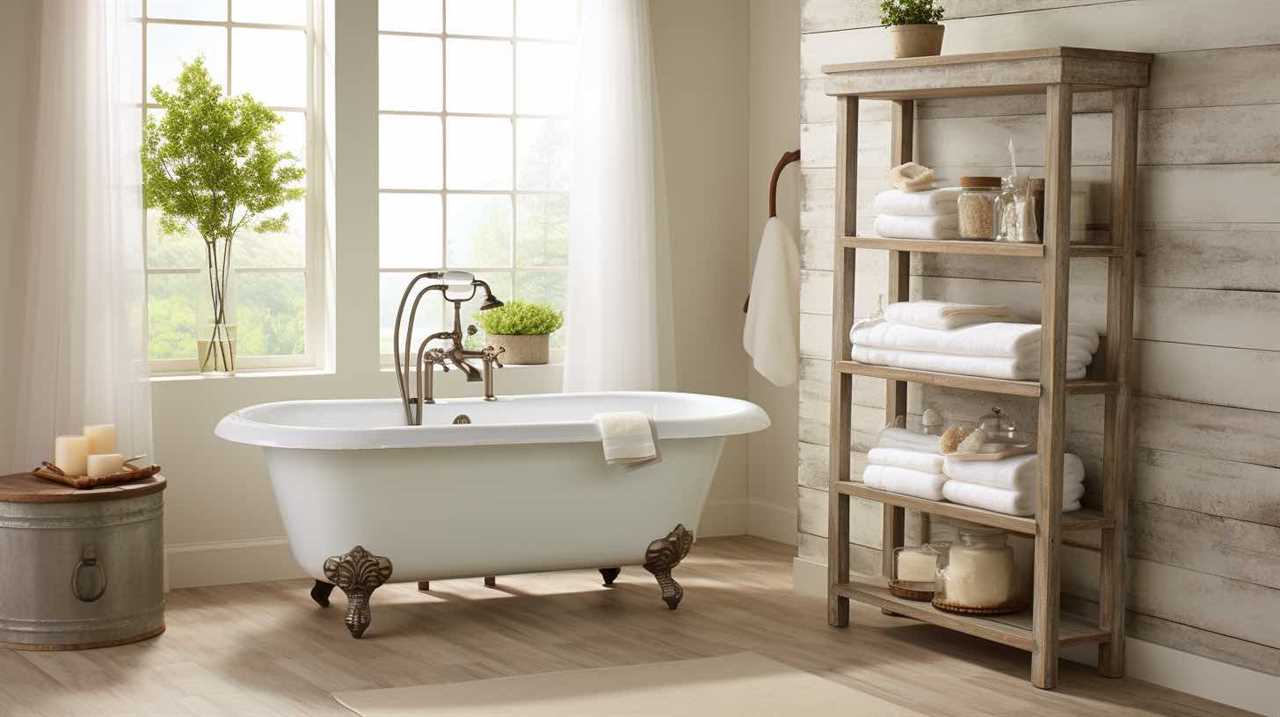Are you exhausted from dealing with blocked sinks and dirty drains? We have the perfect solution for you.
Introducing the sink stopper – a simple yet effective tool that can prevent debris from going down your drain and causing blockages.
In this article, we will explore the benefits of using a sink stopper, provide tips for choosing the right one, and guide you through the installation process.
Get ready to master the art of sink maintenance and keep your drains flowing smoothly.

Key Takeaways
- Sink stoppers control the flow of water, conserve water, prevent clogging, and minimize the risk of damage to delicate items.
- When choosing a sink stopper, consider the different types available, evaluate brands and materials for durability and compatibility, take accurate measurements, and choose a stopper compatible with your sink configuration.
- To install a sink stopper, gather the necessary tools, remove the old stopper, clean the sink drain, apply plumber’s putty, and tighten the new stopper using pliers.
- When maintaining and cleaning a sink stopper, regularly clean it with mild detergent, avoid harsh chemicals, remove debris periodically, and lubricate moving parts with silicone-based lubricant.
Benefits of Using a Sink Stopper
Using a sink stopper enables us to effectively control the flow of water in our sinks, preventing unnecessary waste and potential damage.
The advantages of using a sink stopper are numerous. Firstly, it allows us to conserve water by stopping the flow when we aren’t actively using it. This is especially important in regions experiencing water scarcity.
Additionally, a sink stopper helps to prevent clogging by catching debris and preventing it from going down the drain. This reduces the need for costly plumbing repairs.
Furthermore, using a sink stopper can also help to reduce the risk of damage to delicate items that may accidentally fall into the sink, such as jewelry or small utensils.

However, it’s important to note that there are a few disadvantages to using a sink stopper. One potential drawback is that it can be prone to collecting dirt and grime, requiring regular cleaning.
Additionally, if not properly maintained, a sink stopper can become worn and may need to be replaced more frequently.
Despite these minor drawbacks, the benefits of using a sink stopper far outweigh the disadvantages, making it an essential tool for efficient and responsible water usage.
How to Choose the Right Sink Stopper for Your Needs
To choose the right sink stopper for our needs, we should consider our specific requirements and preferences. Here are four important factors to keep in mind when selecting a sink stopper:

- Different Types: There are various types of sink stoppers available, such as pop-up stoppers, push-in stoppers, and basket strainer stoppers. Each type has its own advantages and disadvantages, so it’s essential to understand which one suits your needs best.
- Brands and Materials: Different brands offer sink stoppers made from various materials like stainless steel, plastic, or silicone. Consider the durability, ease of cleaning, and compatibility with your sink before making a decision.
- Proper Sizing and Measurement: It’s crucial to measure the diameter of your sink drain accurately to ensure a proper fit for the stopper. Take precise measurements to avoid any issues with leakage or improper sealing.
- Compatibility with Sink Configuration: Some sink stoppers are designed specifically for certain sink configurations, such as single or double-bowl sinks. Make sure to choose a stopper that’s compatible with your sink setup to ensure it functions properly.
Step-By-Step Instructions for Installing a Sink Stopper
Now let’s move on to installing the sink stopper, and I’ll walk you through the process step-by-step. First, gather the necessary tools: a sink stopper kit, adjustable pliers, and plumber’s putty. Follow the instructions provided in the kit, but here’s a general guide to help you along:
| Step | Action |
|---|---|
| 1 | Remove the old sink stopper by unscrewing it counterclockwise. |
| 2 | Clean the sink drain thoroughly to remove any debris or residue. |
| 3 | Apply plumber’s putty around the bottom of the new sink stopper. |
| 4 | Insert the new stopper into the drain and tighten it clockwise using adjustable pliers. |
| 5 | Test the stopper by filling the sink with water and checking for leaks. |
Tips for Maintaining and Cleaning Your Sink Stopper
Our sink stopper’s proper maintenance and cleaning are essential for its longevity. To ensure your sink stopper remains in good condition, follow these cleaning techniques:
- Regular Cleaning: Clean the sink stopper once a week or as needed to remove any buildup or debris. Use a mild detergent and warm water to scrub the stopper thoroughly.
- Avoid Harsh Chemicals: Avoid using harsh chemicals or abrasive cleaners on the sink stopper, as they can damage the material. Stick to gentle cleaning solutions to preserve the stopper’s integrity.
- Remove Hair and Debris: Periodically remove any hair or debris that may have accumulated around the sink stopper. This will prevent clogs and maintain proper water flow.
- Lubricate Moving Parts: Apply a small amount of silicone-based lubricant to the moving parts of the sink stopper to ensure smooth operation and prevent rust or corrosion.
By following these maintenance and cleaning techniques, you can keep your sink stopper functioning properly for years to come.
In the next section, we’ll discuss common sink stopper problems and how to troubleshoot them.

Common Sink Stopper Problems and How to Troubleshoot Them
Moving on to the common sink stopper problems and how we can troubleshoot them, let’s address some of the issues that may arise with the functionality of your sink stopper.
One common problem is a sink stopper that won’t stay in place. This can be caused by various factors, such as a worn-out stopper or a loose linkage. To fix this issue, start by checking the condition of the stopper. If it’s worn or damaged, consider replacing it with a new one.
Additionally, inspect the linkage mechanism underneath the sink. Tighten any loose connections or replace any worn-out parts.
Another important aspect to consider when troubleshooting sink stopper problems is the material of the stopper itself. Common sink stopper materials include plastic, rubber, and metal. Each material has its pros and cons.

Plastic stoppers are affordable but may not be as durable as metal stoppers. Rubber stoppers offer a good seal but can wear out over time. Metal stoppers are durable but may be prone to rusting.
Understanding the pros and cons of each material can help you make an informed decision when choosing a new stopper.
Frequently Asked Questions
What Is the Average Lifespan of a Sink Stopper?
On average, sink stoppers have a lifespan of around 5 to 10 years. However, this can vary depending on usage and maintenance. Common problems include wear and tear, clogs, and broken parts.
Can a Sink Stopper Be Used in All Types of Sinks?
Yes, a sink stopper can be used in all types of sinks, but it’s important to consider sink stopper compatibility. Different sink stopper types may require specific installation or may not fit certain sinks.

Are Sink Stoppers Compatible With Double Sinks?
Double sink installation requires a sink stopper that is compatible with both sinks. Using a sink stopper in double sinks offers the advantage of preventing water from draining out of one sink while using the other.
Can a Sink Stopper Be Used in a Bathtub or Shower Drain?
Using a sink stopper in a bathtub or shower drain has various benefits, such as preventing water from draining, allowing for a full tub or shower. Alternatives include drain covers or plugs specifically designed for bathtubs and showers.
Are There Any Safety Concerns With Using a Sink Stopper?
When using a sink stopper, it is important to consider safety precautions and potential hazards. Proper usage and regular maintenance can help prevent accidents and ensure the stopper functions effectively.
Conclusion
To sum it up, using a sink stopper offers numerous benefits, from preventing clogs to conserving water. By choosing the right stopper and following the step-by-step installation instructions, you can easily enhance your sink’s functionality.

Remember to maintain and clean your stopper regularly to ensure its longevity. However, in case you encounter any problems, don’t worry! Our article has got you covered with troubleshooting tips.
So go ahead and enjoy a hassle-free sink experience!










